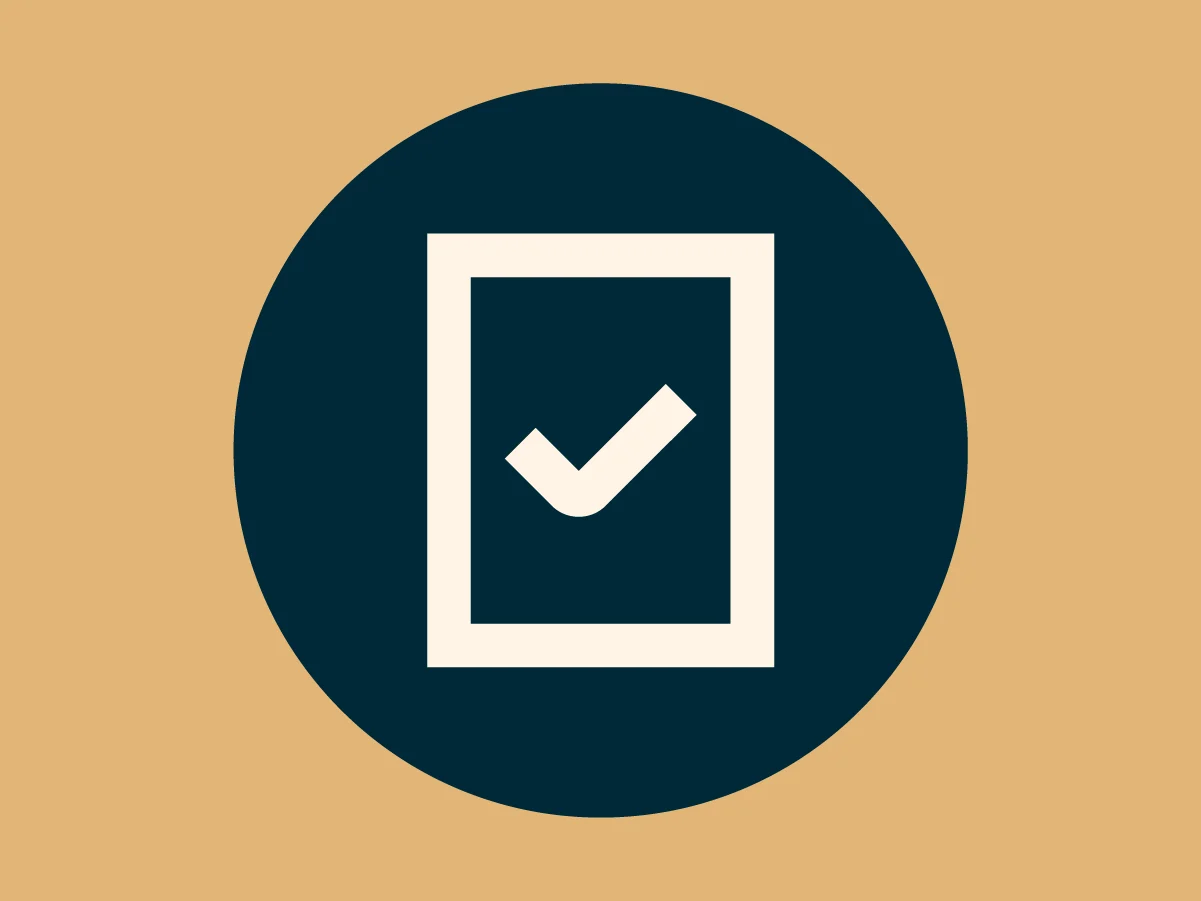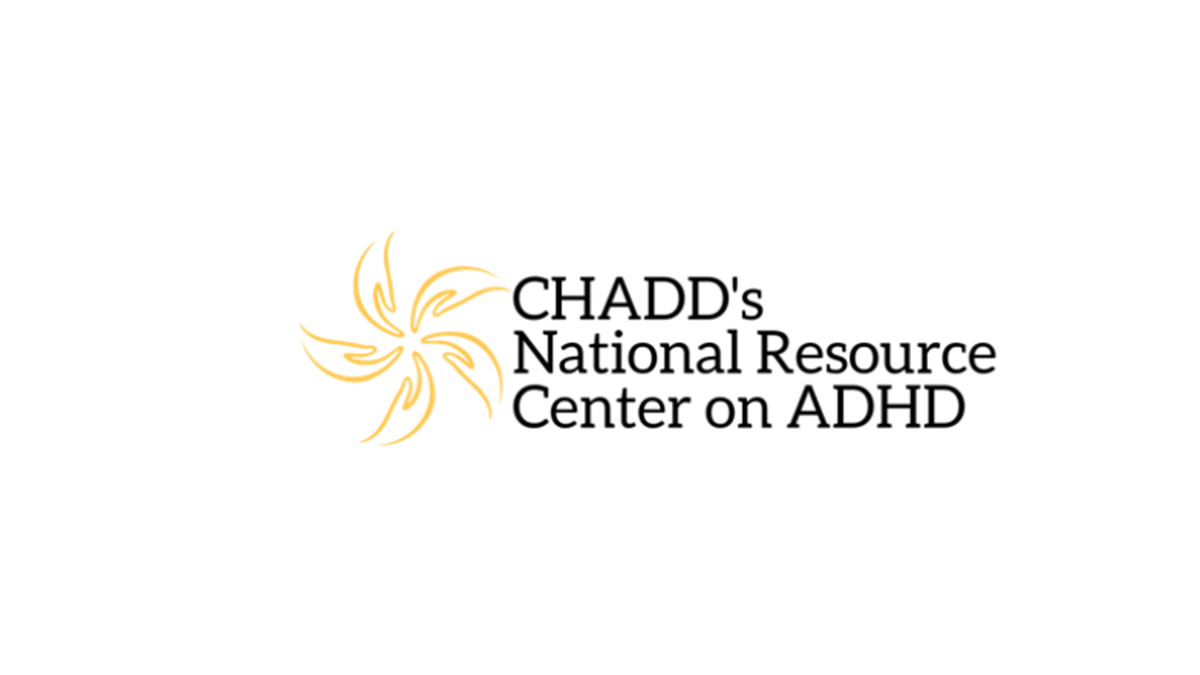Classroom accommodations for ADHD
Explore these classroom accommodations for ADHD. Download and print a list of supports for use at school — and even at home.

By Amanda Morin
Expert reviewed by Ginny Osewalt
Updated March 29, 2024
Students with ADHD have difficulty with attention and self-control. At school, that can look like inattention, distractibility, hyperactivity, impulsivity, and disorganization — all of which can get in the way of learning.
Here are some common accommodations teachers can use to help students with ADHD. You can also download and print a list of these accommodations.
Common classroom accommodations for ADHD PDF - 231.4 KB

Setting up the classroom environment
Use flexible seating , like wiggle chairs, standing desks, footrests, seat cushions, or resistance bands on chair legs.
Increase the space between desks or work tables.
Designate a quiet work space in the classroom.
Set up preferential seating close to the teacher and/or away from high-traffic areas.
Post a written schedule for daily routines and rules. When possible, let the student know ahead of time about schedule changes.
Building organization skills
Use an assignment notebook or a digital calendar.
Provide an extra set of books to keep at home.
Provide folders and baskets of supplies to keep desks organized.
Color-code materials for each subject.
Provide typed notes or an outline of the lesson to help with taking notes.
Teach note-taking strategies , like using graphic organizers and mind-mapping software.
Have a buddy take notes for the student.
Giving instructions
Give directions out loud and in writing, and have the student repeat them.
Provide a lesson outline that details instructions and assignments.
Keep instructions simple, clear, and concrete.
Use pictures and graphs to help create visual interest.
Provide a rubric that describes the elements of a successful assignment.
Help the student break long assignments into smaller chunks .
Completing tests and assignments
Allow understanding to be demonstrated in different ways, like oral reports, posters, and video presentations.
Provide different ways to respond to test questions, like saying the answers or circling them.
Minimize the number of questions and problems per worksheet.
Schedule frequent short quizzes, rather than one long test at the end of each unit.
Give credit for work done instead of taking away points for late or partial assignments (with a plan for moving toward completing assignments).
Grade for content, not for neatness.
Give extra time and quieter space for work and tests.
Managing behavior
Use a behavior plan with a reward system.
Use a nonverbal signal (like a sticky note on the desk or a hand on a shoulder) to get the student’s attention and indicate the need for things like taking a brain break.
Talk through behavior problems one-on-one.
Check in frequently to monitor the student’s “emotional temperature” or frustration level.
More resources
Do you have a student who you think has difficulty with attention and self-control? Check out this fact sheet about ADHD .
Do you think your child may need accommodations? Get tips for talking to teachers about ADHD .
Explore related topics
Adhd fact sheet.

7 tips for talking to your child’s teacher about ADHD

8 common myths about ADHD

- Bipolar Disorder
- Therapy Center
- When To See a Therapist
- Types of Therapy
- Best Online Therapy
- Best Couples Therapy
- Managing Stress
- Sleep and Dreaming
- Understanding Emotions
- Self-Improvement
- Healthy Relationships
- Student Resources
- Personality Types
- Sweepstakes
- Guided Meditations
- Verywell Mind Insights
- 2024 Verywell Mind 25
- Mental Health in the Classroom
- Editorial Process
- Meet Our Review Board
- Crisis Support
Section 504 Accommodations for Students With ADHD
What Is a 504 Accommodation Plan?
Jetta Productions/Getty Images
- Section 504 and IDEA
- Developing a 504 Plan
- Available Accommodations
Students with ADHD are eligible for services and an individual accommodation plan under Section 504 if they have significant difficulty learning in school due to ADHD impairments.
Once it is determined that a student is eligible for services, the next step is to develop a 504 Plan which often includes a written list of specific accommodations, supplementary aids, and related services that will be provided to the student in school.
The purpose of these accommodations is to ensure that the individual educational needs of the student with disabilities are met as adequately as the needs of those students without disabilities.
Section 504 and IDEA for ADHD Students
There are actually two federal laws that address the educational needs of students with disabilities—Section 504 of the Vocational Rehabilitation Act of 1973 (or simply Section 504) and the Individuals with Disabilities Education Act (also known as IDEA).
Section 504 and IDEAguarantee that students with disabilities have access to a free and appropriate public education (FAPE) that is comparable to the education available to non-disabled students.
The definition of a disability is much broader under Section 504 than under IDEA, so more students tend to be eligible for services under Section 504.
Most students with a 504 Plan are served in the general education classroom. Often these are the students who have milder impairments and do not need the intensity of special education but could benefit from extra supports, accommodations, academic and behavioral adjustments, and modifications in the regular educational curriculum. This includes extended times on tests for students with ADHD.
A 504 Plan also tends to be a much faster, easier procedure for obtaining accommodations and supports since IDEA has stricter eligibility criteria and regulations.
Both laws require the placement of a child with disabilities in the least restrictive environment. IDEA requires an individualized educational plan (IEP) with educational goals for the student and specifically designed special education, instruction, and related services that the school is responsible for providing in order to help the student reach those goals.
Section 504 does not require a written IEP, but it does require a plan of reasonable services and accommodations for the student with disabilities.
Developing a 504 Accommodation Plan for ADHD
The first step in developing a 504 Plan is to identify how the student's disability is affecting learning and impairing academic performance and then to determine the specific instruction supports and accommodations that are necessary. These accommodations should significantly reduce or eliminate the effects of a student's disability in the educational setting.
Symptoms of ADHD can affect each person in quite varying ways, and so a 504 Plan must be tailored to her individual strengths, learning style, behavioral challenges, and educational needs. Chris Zeigler Dendy, M.S., is a highly regarded expert in the ADHD and education field. She is also the author of "Teaching Teens With ADD, ADHD, and Executive Function Deficits."
In addition to inattention, Dendy identifies several areas that can be challenging for students with ADHD in the educational setting including:
- Deficits in working memory : Memory skills that are essential for writing essays, doing complex math problems, and understanding what they read
- Disorganization : Losing things, disorganized notebooks, backpacks, and lockers, forgetfulness
- Impaired sense of time : Often late, don't manage time well, difficulty getting started and finishing tasks
- Planning deficits : Difficulty analyzing, problem-solving, synthesizing and implementing a plan
- Slow reading and writing : Produce less written work, read less material
- Trouble controlling emotions : More likely to speak impulsively or "blow up," difficulty using "self-talk" to control behavior
- Undiagnosed coexisting conditions : Such as learning disabilities or depression that make it more difficult to learn
If your child is experiencing any of these learning challenges, it is important that they are addressed in their 504 Plan. Also, keep in mind that approximately 25 to 50% of students with ADHD may also have a specific learning disability. Common learning disabilities seen alongside ADHD include disabilities in reading, math, spelling, and written expression .
Accommodations Available to Qualified Students
These accommodations are often helpful for students with ADHD. Your child's 504 Plan might include some of these. Depending on a student's individual needs related services may include speech, occupational therapy, physical therapy, assistive technology, counseling, as well as training in study strategies, organizational skills, and time management.
Classroom Modifications for ADHD Students
The types of modifications available for students with ADHD include adjustments to testing format and delivery. Students may be permitted the following, for example:
- use of a calculator
- chunking or breaking down tests into smaller sections to complete
- breaks between sections
- a quiet place to complete tests
- multiple-choice, or fill in the blank test format instead of an essay
Modifications in the classroom and homework assignments may include shortened assignments to compensate for the amount of time it takes to complete, extended time to complete assignments, reduced amount of written work, or breaking down assignments and long-term projects into segments with separate due dates for completion of each segment.
Students may also be allowed to dictate or tape-record responses, use a computer for written work, or do oral reports or hands-on projects to demonstrate the learning of the material.
Teaching methods may be modified to provide multisensory instruction, visual cues, and hands- onities, highlight or underline important parts of a task, cue student in on key points of the lesson, or provide guided lecture notes.
Outlines and study guides may be offered, along with reductions in the demands on memory, teaching memory skills such as mnemonics, visualization, oral rehearsal, and repetitive practice, use books on tape, assistance with organization, prioritization, and problem-solving .
Class schedules may also be adjusted by scheduling those classes that require most mental focus at the beginning of school day, adding in regular breaks for the student throughout the day to allow for physical movement and "brain rest," or adjustments to the nonacademic time.
Adjustments to grading, like modifying weight given to exams, breaking test down into segments, and grading segments separately, partial credit for late homework with full credit for make-up work may also be appropriate.
Added Support for Students with ADHD
Preferential seating that's away from distractions—away from the door, window, pencil sharpener or distracting students, near the teacher, or a quiet place to complete schoolwork or tests can be helpful.
Seating the student by a good role model/classroom "buddy" and appointing "row captains" or "homework buddies" who remind students to write down assignments and who collect work to turn in to the teacher should also be considered.
Students should be offered assistance with note-taking, providing the student with a copy of class notes, peer assistance with note-taking, audio taping of lectures.
For distracted students, one-on-one tutoring and organizational assistance (including teacher/school representative meeting with the student at the end of each class or end day to check that homework assignments are written completely in homework notebook and needed books are in the backpack, providing organizational folders and planners, color coding) can make a big difference.
It's important to note that students with ADHD may require extended time for testing, especially those students who tend to retrieve and process information at a slower speed. The use of positive behavior management strategies (including frequent monitoring, feedback, prompts, redirection, and reinforcement) can help students maintain positive motivation.
Teachers should provide clear and simple directions for homework and class assignments by repeating directions, posting homework assignments on the board, and supplementing verbal instructions with visual/written instructions. An extra set of books for the student to keep at home, along with highlighted textbooks and workbooks will help ADHD students stay on task.
Setting up a system of communication (such as a notebook for a weekly progress report, regular emails, or phone calls) between the parents and teacher/school representative helps keep everyone informed about the student's progress or difficulties. Parents should also be notified of homework and project assignments and due dates so they can follow-up with the student at home.
U.S. Department of Health and Human Services Office for Civil Rights. Your rights under section 504 of the Rehabilitation Act.
Lipkin PH, Okamoto J. The Individuals With Disabilities Education Act (IDEA) for Children With Special Educational Needs . Pediatrics. 2015;136(6):e1650-62. doi:10.1542/peds.2015-3409
U.S. Department of Education Individuals with Disabilities Act. Sec. 300.306 Determination of eligibility .
Schuchardt K, Fischbach A, Balke-melcher C, Mähler C. [ The comorbidity of learning difficulties and ADHD symptoms in primary-school-age children ]. Z Kinder Jugendpsychiatr Psychother. 2015;43(3):185-93. doi:10.1024/1422-4917/a000352
Harrison, JR, Bunford, N, Evans, SW, Owens, JS. Educational accommodations for students with behavioral challenges: A systematic review of the literature. Review Educational Res . 2013; 83(4). doi: 10.3102/0034654313497517
- Chris A. Zeigler Dendy, Teaching Teens With ADD, ADHD, and Executive Function Deficits: A Quick Reference Guide for Teachers and Parents (Second Edition). Woodbine House. 2011.
By Keath Low Keath Low, MA, is a therapist and clinical scientist with the Carolina Institute for Developmental Disabilities at the University of North Carolina. She specializes in treatment of ADD/ADHD.
A .gov website belongs to an official government organization in the United States.
A lock ( ) or https:// means you've safely connected to the .gov website. Share sensitive information only on official, secure websites.
- Data and Statistics on ADHD
- Free Materials on ADHD
- Attention-Deficit / Hyperactivity Disorder Articles
- Clinical Care and Treatment
- View All Home
ADHD in the Classroom: Helping Children Succeed in School
At a glance.
Children with attention-deficit/hyperactivity disorder (ADHD) experience more obstacles in their path to success than the average student. The symptoms of ADHD, such as inability to pay attention, difficulty sitting still, and difficulty controlling impulses, can make it hard for children with this diagnosis to do well in school.

What to know
To meet the needs of children with ADHD, schools may offer
- ADHD treatments, such as behavioral classroom management or organizational training;
- Special education services; or
- Accommodations to lessen the effect of ADHD on their learning.
Explore resources available for parents and teachers to help children with ADHD adjust to changes in school.

CDC funds the National Resource Center on ADHD (NRC), a program of Children and Adults with Attention Deficit/Hyperactivity Disorder (CHADD). The NRC provides resources, information, and advice for parents on how to help their child. Learn more about their services.
How schools can help children with ADHD
The American Academy of Pediatrics (AAP) recommends that the school environment, program, or placement is a part of any ADHD treatment plan.
AAP also recommends teacher-administered behavior therapy as a treatment for school-aged children with ADHD. You can talk to your child's healthcare provider and teachers about working together to support your child.
Classroom treatment strategies for students with ADHD
There are some school-based management strategies shown to be effective for students with ADHD: 1
- Behavioral classroom management 1 2
Organizational training
Did you know, behavioral classroom management.
The behavioral classroom management approach encourages a student's positive behaviors in the classroom, through a reward system or a daily report card, and discourages their negative behaviors. This teacher-led approach has been shown to influence student behavior in a constructive manner, increasing academic engagement. Although tested mostly in elementary schools, behavioral classroom management has been shown to work for students of all ages.
Organizational training teaches children time management, planning skills, and ways to keep school materials organized in order to optimize student learning and reduce distractions. This management strategy has been tested with children and adolescents.
Teaching and supporting positive behavior
Special education services and accommodations.
Most children with ADHD receive some school services, such as special education services and accommodations. There are two laws that govern special services and accommodations for children with disabilities:
- The Individuals with Disabilities Education Act (IDEA)
- Section 504 of the Rehabilitation Act of 1973
Learn more about IDEA vs Section 504
The support a child with ADHD receives at school will depend on if they meet the eligibility requirements for one of two federal plans funded by IDEA and Section 504:
- An Individualized Education Program (IEP) , or a
What are the main differences between an IEP and a 504 Plan?
• 504 Plan: Provides services and changes to the learning environment to meet the needs of the child as adequately as other students and is part of Section 504 of the Rehabilitation Act.
Accommodations
IEPs and 504 Plans can offer accommodations for students to help them manage their ADHD, including the following:
- Extra time on tests
- Instruction and assignments tailored to the child
- Positive reinforcement and feedback
- Using technology to assist with tasks
- Allowing breaks or time to move around
- Changes to the environment to limit distraction
- Extra help with staying organized
There is limited information about which types of accommodations are effective for children with ADHD. 3 However, there is evidence that setting clear expectations, providing immediate positive feedback, and communicating daily with parents through a daily report card can help. 4
What teachers and school administrators can do to help
For teachers, helping children manage their ADHD symptoms can present a challenge. Most children with ADHD are not enrolled in special education classes but do need extra assistance on a daily basis.
Helping students with ADHD
Positive discipline practices at school can help make school routines more predictable and achievable for children. Children with ADHD benefit when schools use positive rather than punitive disciplinary strategies.
Close collaboration between the school, parents, and healthcare providers will help ensure the child gets the right support. Here are some tips for classroom success:
Communication
- Give frequent feedback and attention to positive behavior.
- Be sensitive to the influence of ADHD on emotions, such as self-esteem issues or difficulty regulating feelings.
- Provide extra warnings before transitions and changes in routines.
- Understand that children with ADHD may become deeply absorbed in activities that interest them (hyper-focus) and may need extra assistance shifting their attention.
Assignments and tasks
- Make assignments clear—check with the student to see if they understand what they need to do.
- Provide choices to show mastery (for example, let the student choose among written essay, oral report, online quiz, or hands-on project.
- Make sure assignments are not long and repetitive. Shorter assignments that provide a little challenge without being too hard may work well.
- Allow breaks—for children with ADHD, paying attention takes extra effort and can be very tiring.
- Allow time to move and exercise.
- Minimize distractions in the classroom.
- Use organizational tools, such as a homework folder, to limit the number of things the child has to track.
Develop a plan that fits the child
- Observe and talk with the student about what helps or distracts them (for example, fidget tools, limiting eye contact when listening, background music, or moving while learning can be beneficial or distracting, depending on the child).
- Communicate with parents on a regular basis.
- Involve the school counselor or psychologist.
More information for teachers and school administrators
CHADD's National Resource Center on ADHD provides information for teachers and educators from experts on how to help students with ADHD in the classroom.

Parent education and support
How to best advocate for your child.

What every parent should know
- School support and services are regulated by laws. The U.S. Department of Education has developed a "Know your rights" letter for parents and a resource guide for educators to help educators, families, students, and other interested groups better understand how these laws apply to students with ADHD so that they can get the services and education they need to be successful.
- Healthcare providers also play an important part in collaborating with schools to help children get the special services they need. 5
More information
- CHADD's ADHD Toolkits for Parents and Educators
- Health and Supportive School Environments | CDC
- Society of Clinical Child & Adolescent Psychology - Effective child therapy: ADHD
- Evans SW, Owens JS, Wymbs BT, Ray AR. Evidence-Based Psychosocial Treatments for Children and Adolescents With Attention Deficit/Hyperactivity Disorder. J Clin Child Adolesc Psychol. 2018 Mar-Apr;47(2):157-198.
- DuPaul GJ, Chronis-Tuscano A, Danielson ML, Visser SN. Predictors of Receipt of School Services in a National Sample of Youth With ADHD. J Atten Disord. 2019 Sep;23(11):1303-1319.
- Harrison JR, Bunford N, Evans SW, Owens JS. Educational accommodations for students with behavioral challenges: A systematic review of the literature. Review of Educational Research. 2013 Dec;83(4):551-97.
- Moore DA, Russell AE, Matthews J, Ford TJ, Rogers M, Ukoumunne OC, Kneale D, Thompson-Coon J, Sutcliffe K, Nunns M, Shaw L. School-based interventions for attention-deficit/hyperactivity disorder: a systematic review with multiple synthesis methods. Review of Education. 2018 Oct;6(3):209-63.
- Lipkin PH, Okamoto J; Council on Children with Disabilities; Council on School Health. The Individuals With Disabilities Education Act (IDEA) for Children With Special Educational Needs. Pediatrics. 2015 Dec;136(6):e1650-62.
- CHADD. Education. Available at: https://chadd.org/for-parents/education/ . Accessed on November 17, 2023
- CHADD. Overview. Available at: https://chadd.org/for-educators/overview/ . Accessed on November 17, 2023
- CHADD. About the National Resource Center. Available at: https://chadd.org/about/about-nrc/ . Accessed on November 17, 2023
- CHADD. Individuals with Disabilities Education Act. Available at: https://chadd.org/for-parents/individuals-with-disabilities-education-act/#:~:text=What%20are%20my%20responsibilities%20as%20a%20parent%3F . Accessed on November 17, 2023
- U.S. Department of Education. Know Your Rights: Students with ADHD. Available at: https://www2.ed.gov/about/offices/list/ocr/docs/dcl-know-rights-201607-504.pdf . Accessed on November 17, 2023
- U.S. Department of Education. Dear Colleague Letter and Resource Guide on Students with ADHD. Available at: https://www2.ed.gov/about/offices/list/ocr/letters/colleague-201607-504-adhd.pdf . Accessed on November 17, 2023
- The American Academy of Pediatrics. How Schools Can Help Children with ADHD. Available at: https://www.healthychildren.org/English/health-issues/conditions/adhd/pages/Your-Child-At-School.aspx . Accessed on November 17, 2023
- ChangeLab Solutions. Developing Positive Disciplinary Strategies to Support Children with ADHD and Tourette Syndrome. Available at: https://www.changelabsolutions.org/product/positive-disciplinary-strategies-children-adhd-tourette?utm_source=ChangeLab+Solutions+Active&utm_campaign=0c815dc553-CMH-School-Disc_Launch_724&utm_medium=email&utm_term=0_-0c815dc553-%5BLIST_EMAIL_ID%5D. Accessed on July 17, 2024
Attention-Deficit / Hyperactivity Disorder (ADHD)
CDC's Attention-Deficit / Hyperactivity Disorder (ADHD) site includes information on symptoms, diagnosis, treatment, data, research, and free resources.
For Everyone
Health care providers.

Which Accommodations Are Available for My Child With ADHD?
Finding the right accommodations for our children at school and home..
Posted December 3, 2023 | Reviewed by Jessica Schrader
- What Is ADHD?
- Take our ADHD Test
- Find a therapist to help with ADHD
- Children and teens with ADHD may need support plans in school.
- There are accommodations available to our children with ADHD in school.
- We can also create "accommodations" for our children in the home environment.

Our children, teens, and young adults with ADHD often struggle to get through daily routines at home and in school even though these routines have been in place since the beginning of the school year. As parents, setting up the expectation, in our heads, that our kids are going to be able to get things done at school without accommodation can mean we are setting them (and us) up for failure and frustration.
Some may argue that we are not preparing our children for "the real world" when we accommodate our kids. However, I respectfully disagree. Our children with ADHD often need a little more time and space to gain the skills they will need for the next phase of their development. For example, we can teach our children in elementary school the skills they need as they prepare for middle school and so on. These skills we call executive functioning skills are prioritizing tasks and assignments, managing time, organizing materials and belongings, and the ability to self-regulate . All of these skills ultimately help our children, teens, and young adults with ADHD to get school and life tasks done and develop a sense of self-efficacy or a solid sense of self.
For college students, a 504 Accommodation Plan may be needed and can be gained through the office of disability services for the specific university or college. A diagnosis is required as well as documentation from a professional indicating the need for a 504 Accommodation Plan and specific accommodations needed based on a diagnosis (ADHD, anxiety , etc.) or a psycho-educational evaluation indicating a specific learning disability in addition to ADHD and the types of accommodations needed based on what the data is supporting.
Differences between a 504 Plan and an Individualized Education Plan
If your child or teen has a diagnosis of ADHD, your child may be eligible for a 504 Plan or an Individualized Education Plan (IEP) through their school. A 504 Plan gives your child accommodations within the classroom for homework, test-taking, organization, standardized tests, projects, and papers. It may require a diagnosis by a professional (neurologist, psychiatrist, pediatrician, developmental pediatrician, or psychologist).
An IEP provides a special education program that requires testing (educational and psychological) and eligibility can be based on a diagnosis provided by a professional (neurologist, psychiatrist, pediatrician, developmental pediatrician, or psychologist). Your child or teen’s ADHD diagnosis must be impacting your child’s ability to access the general education curriculum. Services available include pull-out resources or in-class resources for certain subjects, as well as related services (such as speech therapy , physical therapy, occupational therapy, and counseling). An individual or shared paraprofessional can also be a part of the IEP.

Accommodations for your child’s 504 Plan or IEP
Organizational strategies for school:
Elementary school students
- Weekly desk clean-out.
- Weekly backpack clean-out.
- Teacher review of the accuracy of assignments written in daily planner.
Middle and high school
- Weekly check-in with a guidance counselor to review grades and (missing) assignments.
- Weekly check-ins between teacher and student to lesson, re-teach, or repeat content to ensure that the child has an understanding of the topic being taught.
Writing strategies:
- Use a visual graphic organizer (e.g., the hamburger, ice cream, spider, etc.).
- Break down writing assignments into smaller parts with short-term deadlines.
- Review written work before submission to review the accuracy of the prepared paper and allow for feedback and edits.
Taking notes in class:
- Teacher-generated lesson outlines for students to follow and fill in information.
- Gaining notes from a peer note-taker.
Test-taking:
- Extended time on tests, quizzes, and class-based projects.
- Allow for tests/quizzes to be taken in a low-distraction classroom.
- Study guides are provided a minimum of two days prior to an assessment.
Sensory strategies:
- Allow for movement breaks throughout the day.
- Consult with occupational therapy and class teacher each month.
- Allow for fidgets or other types of sensory tools to improve attention and decrease restlessness.
- Allow the student to chew gum or hard pretzels during breaks.
You can also use these strategies at home:

- Break down a multi-step task into one or two steps at a time (school-based or activities of daily living).
- Color-code notebooks and folders for each subject so that your child isn’t processing the word “S-C-I-E-N-C-E” but rather the color green, for example.
- Set a timer for a homework assignment and work against the timer. This will take a task that can feel endless and give it a time limit and an end.
- Post reminders or information to be remembered (e.g., pack lunch) on a Post-it note or set an alarm on a phone, tablet, or Alexa type of device.
- Take pictures of your child doing the activity, step by step, and use that to guide the morning or bedtime routine.
- Place your child’s desk in a corner between two walls, away from windows and doors. Keep the surface empty. Place all materials in bins in the drawers.
Repetition and consistency within the home and school environment can help our children, teens, and young adults with ADHD to build the skills that they need as they enter into the next developmental phase.

Liz Nissim-Matheis, Ph.D. , is a licensed Clinical Psychologist and certified School Psychologist in private practice in New Jersey.
- Find a Therapist
- Find a Treatment Center
- Find a Psychiatrist
- Find a Support Group
- Find Online Therapy
- United States
- Brooklyn, NY
- Chicago, IL
- Houston, TX
- Los Angeles, CA
- New York, NY
- Portland, OR
- San Diego, CA
- San Francisco, CA
- Seattle, WA
- Washington, DC
- Asperger's
- Bipolar Disorder
- Chronic Pain
- Eating Disorders
- Passive Aggression
- Personality
- Goal Setting
- Positive Psychology
- Stopping Smoking
- Low Sexual Desire
- Relationships
- Child Development
- Self Tests NEW
- Therapy Center
- Diagnosis Dictionary
- Types of Therapy

It’s increasingly common for someone to be diagnosed with a condition such as ADHD or autism as an adult. A diagnosis often brings relief, but it can also come with as many questions as answers.
- Emotional Intelligence
- Gaslighting
- Affective Forecasting
- Neuroscience
Celebrating 25 Years
- Join ADDitude
- |

- What Is ADHD?
- The ADHD Brain
- ADHD Symptoms
- ADHD in Children
- ADHD in Adults
- ADHD in Women
- Find ADHD Specialists
- Symptom Checker Tool
- Symptom Tests
- More in Mental Health
- ADHD Medications
- Medication Reviews
- Natural Remedies
- ADHD Therapies
- Managing Treatment
- Treating Your Child
- Success @ School 2024
- Behavior & Discipline
- Positive Parenting
- Schedules & Routines
- School & Learning
- Health & Nutrition
- Teens with ADHD
- More on ADHD Parenting
- Do I Have ADD?
- Getting Things Done
- Time & Productivity
- Relationships
- Organization
- Health & Nutrition
- More for ADHD Adults
- Free Webinars
- Free Downloads
- Newsletters
- Guest Blogs
- eBooks + More
- Search Listings
- Add a Listing
- News & Research
- For Clinicians
- For Educators
- ADHD Directory
- Manage My Subscription
- Get Back Issues
- Digital Magazine
- Gift Subscription
- Renew My Subscription
- ADHD Adults
- Home Organization
Home Neat Home: An ADHD Organization Plan
Adhd is not synonymous with mess. here, professional organizer and author lisa woodruff offers advice for adults with adhd on how to tackle the clutter, set up weekly systems, think beyond the to-do list, and maintain a positive mindset while making progress every day..

Home organization is a skill that can be learned by anyone at any time. I honestly believe that. It’s just easier for some than for others. I do not have ADHD, but I have successfully parented, taught, and professionally organized people who do. And along the way, I learned a lot about how the ADHD brain works.
ADHD is a spectrum disorder that manifests through the eight executive processes of the brain:
- flexible thinking
- working memory
- self-monitoring
- task initiation
- organization
- impulse control
- and emotional control.
Basically, the executive functions of the brain help you plan, organize, and complete tasks.
If you have ADHD, and are trying to organize your home, it’s likely that you are struggling with one (or more) of these executive functions , which makes getting organized especially challenging. Challenging, but not impossible. These tips will help you change your mindset about what an organized home should look like, and encourage you to get started.
[ Get This Free Resource: Take Control of Your Life and Schedule ]
1. Ditch perfectionism when organizing your home.
I have not researched the link between perfectionism and ADHD, but I have seen it many times. Perfectionism appears to exacerbate executive function deficits. If I have two clients with the same ADHD symptoms , and one is a perfectionist, it is harder for the perfectionist to get organized. Start a project with the understanding that perfection is not the goal, progress is.
2. Assemble a home-organization team.
A professional organizer is a great resource, but organizers are not accessible to everyone. Play a game with your kids to see who can declutter the most. Confess to your spouse the stress you feel, and about your desire to live a more organized life. Everyone in your family may not be on board, and that’s OK. Find those who are and enlist their help.
3. Create organizational structure.
Schedule your organizing task for the same time every day. Before long, your muscle memory will take over and your organizing will be on autopilot. We do this with our morning coffee and as part of our nighttime routine.
4. Take “before” photos of your mess.
Individuals with ADHD have a hard time seeing how much progress they have made and estimating how long tasks will take. Even if you’re embarrassed, take the photos! You don’t have to show them to anyone. Once you begin to make progress, you’ll be glad to have a visual reminder of how far you’ve come.
[ Click to Download: Your Free Guide for Controlling Clutter ]
5. Find one organizing mentor and stick with him or her.
Each organizer does things a little differently, which means not every program will work for you. But don’t bounce around trying to gather the best tips from all of them. Find a person you like, and a program you can afford (some are free), and stick to it until the end. Even if it isn’t the perfect program for you, you will make progress, and will be free to move on to the next project.
6. Set small organization goals.
Don’t try to organize a thousand books in one sitting. You don’t have to dump every article of clothing onto the floor. Break a big job into small pieces and take on one piece at a time. You’ll feel accomplished, and fight off discouragement.
7. Pick the right time of day.
Some of us are morning people. Many people with ADHD are not. There’s no commandment that says you have to work in the morning, so if it’s better for you to work at night, go for it! Be willing to try different times of day.
8. Make positive associations.
Drink your favorite tea or soda while you’re organizing. Allow yourself to listen to that page-turner audiobook while you’re working on your home. If you associate things you like with something that’s difficult, motivation comes easier.
9. Get a physical roadmap .
If you join an organizing program, print it out and post it somewhere you will see it. If it lives only inside your phone or computer, it’s easy to forget about it. You won’t forget about the 10 sheets of paper on your bulletin board.
10. Trash your trash.
So much of what is “disorganized” in our home is garbage—actual garbage that can get thrown in a trash can, or things that can be recycled, like bottles and paper. Grab a big trash bag, go through your home, and pick up everything that belongs in the garbage. You’ll be shocked at how much clearer your space looks.
11. Declutter your home.
Once the trash is gone, decluttering should be easier. You don’t need to be a minimalist (I’m not!), but keep only the things you love and use. It doesn’t matter whether an item still works, or that you paid good money for it. If you don’t love it or use it regularly, let it go.
12. Focus on practical solutions .
Pinterest is a great tool, but it can also be intimidating. If your snacks aren’t arranged according to the colors of the rainbow, don’t feel bad. The goal is to have only things that you use and love in your home, and to know where they all are. That’s it! Practicality is all.
13. Find one task to start and complete.
It will give you a feeling of success and motivate you to take the next step. You are building your task-initiation muscle.
14. Find others you can share your struggles with.
This can be your best friend across town, or a free Facebook group of strangers. When you’re going through the same experiences as someone else, it’s affirming. It’s not just you.
15. Don’t buy anything.
I know that sounds counterintuitive, because home organization sites are full of beautiful bins and baskets. Resist. Declutter first, figure out how your space can be best utilized, and then make only the purchases that will keep you on track.
16. Match your containers to your stuff.
Don’t take up a whole cabinet for spices if you never cook, and don’t jam 30 sweaters into a tiny drawer. Once you’ve decluttered, and you’re keeping only the essentials, you can find containers that function. That may mean making purchases, or it may mean switching dressers with your daughter (who’s at college) because hers is bigger.
17. Monotask.
In my 100-Day Home Organization Program, we focus on one task per day. We don’t organize the entire house in one day; we organize the spice drawer. Monotasking can be hard for a person with ADHD, but having a clear roadmap makes it easier.
18. Get audio clues.
Whether it’s a podcast or an audiobook, hearing your strategies triggers a different response in your brain than reading about them. You can find motivation and direction in the voice of someone who’s been there.
19. Write it down.
If you think it, put it on paper. If you write it down, it’s an object, not just a thought. Objects are much easier to organize than thoughts.
20. Time each task on your to-do list.
I used to hate emptying the dishwasher. I thought it took 20 minutes. So instead of emptying it, I turned on a TV show or did something else. I thought emptying it would take forever. One day, I said, “Let’s time it.” It took four minutes. Knowing that the chore takes four minutes allows me to squeeze it in here and there rather than avoiding it.
20. Don’t keep a to-do list.
What, am I crazy? I just told you to write everything down! You can keep a master list of tasks you want to achieve, but don’t stare at it every day and hope you get them all done (then feel bad when you don’t). When you plan your week, choose three and only three tasks from your list each day, and bring your focus to those tasks. Yes, you will get only three things done, not a million, but you weren’t going to get a million tasks done anyway.
21. Small progress is still progress.
Three tasks completed is not a hundred, but it’s better than zero. An organized shelf is not an organized pantry, but it’s better than a disorganized shelf. Small progress is still progress.
22. Give everything a home.
Most of us don’t put things away because we never defined what “away” was. The number one mistake I see people make is that they try different organization systems all the time. Change is your enemy. New is not better. Keeping your keys in the same boring spot for 20 years is perfect. Organizing your home is not where you need to show off your creative side.
23. Schedule a time to put items away.
This is a big barrier to organization — not putting things away. At the end of the day, set a timer for 10 minutes to “close down” your home and put things away. No one likes to do this, but if you can make it a habit, it becomes easier and less mentally taxing.
24. Organization is a skill, not a talent.
It’s not something you are born with. It’s a habit that is cultivated over time. It’s never too late to start. And when you do start, get an organizing buddy with similar goals. Encourage each other to make progress in organizing your homes. The best scenario would be for both of you to organize the same spaces in your homes at the same time so you can share ideas.
25. Hire it out.
If you can afford to hire help, do it. You’ll save so much more than money — in time, in lower anxiety — in someone else’s expertise. You can hire out an entire project, or just have someone come and clean after it’s done. You don’t have to do everything yourself.
26. Take “after” photos.
Compare them to the “before” photos. You did it! You made progress. Treat yourself to your favorite drink or a night of relaxation. You deserve it.
27. Give yourself grace.
Your worth as a person has nothing to do with how organized your house is. Refocus the energy you spend on worrying about your home’s condition, and you’ll be free to do what you are created to do.
[ Get This Free Download: Clean Up and Get Organized in One Weekend ]
Use a Sunday Basket
The Sunday Basket is the system I created to help me get on top of all the paper and daily to-dos I had as an adult. A Sunday Basket is a container — it can be a basket, a box, or a bag — in which you toss all of your paper each week. You will check this container on a regular basis. I check mine on Sunday. For you, it may be Friday or Tuesday. Here’s how to create and use a Sunday Basket:
Step 1. Grab a laundry basket and go on a scavenger hunt around the house. Pick up every piece of paper from every room and put it in the laundry basket. Finding your paper does two things: It gets all the paper out of your rooms, so wherever you go, you’re not going to see paper. That will bring down your stress level and give you some breathing space. Second, you’ll know where to look for things. It might take you 15 minutes to find something, but it won’t take an hour.
Step 2. Make yourself a cup of coffee or have a glass of wine, turn on mindless TV, and sort through the laundry basket, one piece of paper at a time, and divide the pieces into piles: trash, a “to file” pile (insurance statements, tax returns), and a shredding pile. The only thing left in the laundry basket will be actionable items—an invitation to a graduation party, permission slips that have to go back to school, and so on.
Step 3. Work on the actionable items in your basket, setting aside time in your calendar weekly to do this. Some weeks this takes me two hours; other weeks, I can get it done in 15 minutes.
If clutter overwhelms you before you can make any progress in organizing a room, walk into the room with a mission to do one thing—and only one thing.
Session 1: The first thing to do is find everything that is trash. Take a trash bag and talk to yourself, chanting, “Trash, trash, trash.” When you chant “trash,” even if your mind starts to wander, your mouth is saying “trash,” which snaps you out of it. The first time through you will see the obvious trash. The second time through, you’ll think, “Oh, I didn’t see that.”
Session 2: The next time you come into the room, you’re going to chant, “food and dishes.” Collect all the dishes and take them to the sink. Collect all the food and put it away.
Session 3: On the third time through the same space, focus on clothing items. Say, “Clothing, clothing, I’m picking up clothing,” and take it all right into the laundry room.
Now that you’ve gotten the obvious items out of the room, it’s time to do 15-minutes-a-day organizing tasks. Some examples: Go through all the DVDs or collect all the pens and pencils scattered around and put them away.
SUPPORT ADDITUDE Thank you for reading ADDitude. To support our mission of providing ADHD education and support, please consider subscribing . Your readership and support help make our content and outreach possible. Thank you.
Clutter: Read These Next

I’m an ADHD Expert — and I Still Struggle With ADHD

10 Books Every Woman Should Read After Her ADHD Diagnosis

ADDitude's Top 10 Webinars of 2022

Holderness Family Values: 9 ADHD Truths (with a Side of Laughter)
Adhd newsletter, for adults with add, get things done, end clutter, improve relationships, fight shame & more..
It appears JavaScript is disabled in your browser. Please enable JavaScript and refresh the page in order to complete this form.

IMAGES
VIDEO
COMMENTS
Time Management Accommodations. 1. Extra Time to Complete Assigned In-Class Work, Homework and Tests. Struggling with time management skills or perceiving/judging time are common ADHD issues. This ...
Explore these classroom accommodations for ADHD. Download and print a list of supports for use at school — and even at home. By Amanda Morin. Expert reviewed by Ginny Osewalt. Updated March 29, 2024. Español. Students with ADHD have difficulty with attention and self-control. At school, that can look like inattention, distractibility ...
Accommodations for students with ADHD most often include decreasing the length of an assignment. For instance, writing shorter papers, answering fewer test questions, or completing fewer homework problems. The overall format of an assignment might be modified as well. Examples of this are dictating written assignments into a tape recorder or ...
parents of ADHD students may wish to have formal accommodations written into a document that is often referred to as a 504 Plan (because it refers to section 504 of the Americans with Disabilities Act). This plan identifies the steps to be taken to help insure that students with diagnosed difficulties ... Assignments/Homework
Top 504 Plan Homework Accommodations for ADHD. Here are 504 Plan accommodations that I recommend: A prompt from the teacher to turn in assignments. A 504 Plan is not an IEP — it has fewer teeth. 504s work more like recommendations than the enforced rules of an IEP, but it's often enough to have it in writing that the teacher should prompt ...
If your child: Turns in work with careless mistakes Try: Scheduling five-minute period to check over work before turning in homework or tests [Free Guide: 40 Best Accommodations for Children with ADHD or LD] Behavior Accommodations for ADHD. If your child: Is constantly engaging in attention-getting behavior Try: Ignoring minor inappropriate ...
Available Accommodations. Students with ADHD are eligible for services and an individual accommodation plan under Section 504 if they have significant difficulty learning in school due to ADHD impairments. Once it is determined that a student is eligible for services, the next step is to develop a 504 Plan which often includes a written list of ...
Other IEP Accommodations in High School "My 14-year-old son has brain damage from a brain tumor, along with ADHD, a math disorder, ODD, depression, and cognitive disabilities. He has an extra set of books at home, limited math assignments, a goal of completing 75 percent of his homework, and a calm down spot when he needs it.
ADHD: combined symptoms Many students with ADHD show a combination of inattention and hyperactive-impulsive behav-iors. You can use a combination of accommo-dations from both lists. One of the best ways to identify which accommodations might work best is to observe the student's natural behavior. Sample Behaviors Accommodations
Accommodations to lessen the effect of ADHD on their learning. Explore resources available for parents and teachers to help children with ADHD adjust to changes in school. ... Use organizational tools, such as a homework folder, to limit the number of things the child has to track.
School can be challenging for children with ADHD. With the right accommodations, your child can feel more supported while learning. Conditions ... Forgetting to do homework, trouble staying on ...
ADHD: combined symptoms. Many students with ADHD show a combination of inattention and hyperactive-impulsive behaviors. You can use a combination of accommodations from both lists. One of the best ways to identify which accommodations might work best is to observe the student's natural behavior. Some sample behaviors and accommodations include:
Accommodations for Hyperactive ADHD. "Using a stress ball and not being required to sit while doing his work has been most helpful for my child.". — An ADDitude Reader. " Running errands for the teacher always helps get extra energy out.". — An ADDitude Reader. "My daughter has a hall pass that she can use whenever she needs to ...
Examples of accommodations include testing in a quiet room, preferential seating, digital textbooks, tailored homework assignments, or a sign language interpreter for a track meet. ADHD Accommodations. What accommodations can be in a 504 plan for ADHD? Well, it would be determined by the student's needs. I have several listed below.
Accommodations for your child's 504 Plan or IEP. Organizational strategies for school: Elementary school students. Weekly desk clean-out. Weekly backpack clean-out. Teacher review of the ...
Here are several examples of appropriate accommodations that might be included in a Section 504 Plan for a child with ADHD: Reducing the number of homework problems without reducing the level or content of what is being taught. Giving the student a quiet place to work, free from distractions.
Executive Function Depletion. One of the most fundamental differences between ADHD brains and those boring old neurotypical ones is that they have less energy to fuel their executive functioning (the conductor of our brains). This means that they get depleted easily and, often, tasks that require executive functioning feel too difficult to do.
Go for Growth: Shortening assignments. "Extended time on homework" is the most common accommodation given to children with ADHD. This accommodation is often the result of students missing homework assignments and not completing work at home. This can be due to the fact that students are overwhelmed and exhausted once they get home from school.
Schedule 5-10 minute breaks to allow time for your child to move around and grab a healthy snack and drink to energize. Work with your child to see when and how often breaks are needed. Check homework with your child. Give positive feedback to show you are noticing his or her effort and perseverance.
Here's How We Can Help You On Your ADHD Adventure. ADDA is the world's largest organization dedicated exclusively to helping adults with ADHD to live better lives. After 30 years of service, we've learned a few things - and we're here to help you banish the confusion and overwhelm. HERE'S OUR 4-STEP JOURNEY.
Here are some ideas for IEP or 504 Plan accommodations that have helped many of my students during distance learning. 1. Create One Place for Everything. Schoology, Google Classroom, Seesaw, etc. — schedules and assignments are presented in a variety of different formats, and they may vary from teacher to teacher within the same grade.
Step 3: Create an active paper-management system for your kitchen counter piles. Instead of hoping you will complete the pile's tasks and eliminate the pile, embrace the physical reminders of routine tasks. The key to making an active paper-management system work is to set aside a specific day and time to work through your paper.
7. Pick the right time of day. Some of us are morning people. Many people with ADHD are not. There's no commandment that says you have to work in the morning, so if it's better for you to work at night, go for it! Be willing to try different times of day. 8.